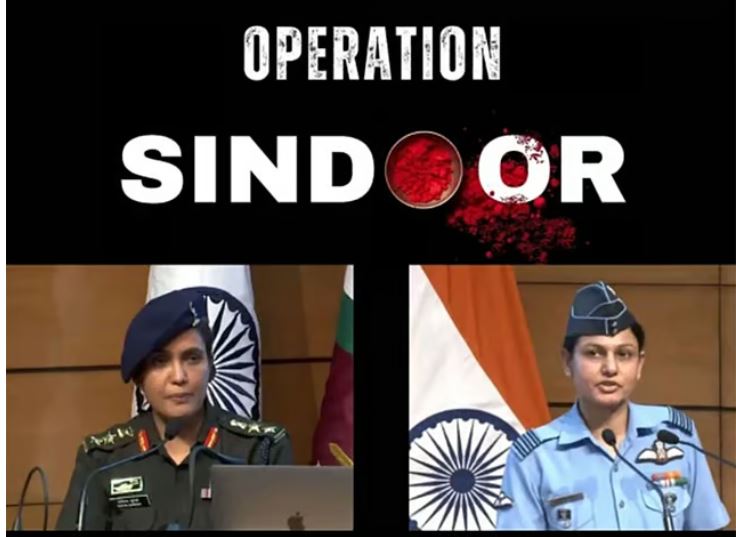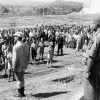Goa is abuzz with excitement as vintage bike and car owners, users, collectors and fans are decking […]

NARI SHAKTI ON DISPLAY!
Cover Story, May 10- May 16, 2025 May 9, 2025By Rajan Narayan
HINDU marriages conclude with the ritual of the bride and groom applying red vermilion powder called “sindoor” at the hair parting of a bride. The traditional Hindu bride applies sindoor with pride for her “suhag” (husband). The sindoor is an announcement to all that these woman are married and may be respected as married women.
The recent Pahalgam terrorists killed the male tourists in front of their wives. It was an act akin to wiping out the sindoor of their suhag. Reducing the “suhagin” to widowhood. In this case the most viral symbol of the destruction of a woman’s suhaag was seen when the terrorists shot 27-year-old naval officer Vinay Narwal before his wife Himanshi, both of whom were recently married and on their honeymoon in Kashmir valley.
NOT SURPRISING
IT IS not surprising that in retaliation for the attack, Narendra Modi’s government and defense forces called the counter-attack on early morning May 7 as – “Operation Sindhoor.” Some of the more notorious television channels even depicted sindoor turning dramatically into bloodshed.
Unlike the surgical strike that was carried out by Goa’s own late Defense Minister Manohar Parrikar after the Pulwama attack, this time the scope of the early morning attack on Wednesday, 2.38 am on May 7, 2025 was much wider. Operation Sindoor targeted nine terror camps — four in Pakistan and five of them in Pakistan occupied Kashmir.
The claim being made is that the headquarters of Lashkar-e-Taiba chief Jaish Mohammad and gang of terrorists have been destroyed. The strike was carried out using the Indian Air Force’s Rafael Mirage-2000 and Sukhoi-30MKI fighters, which fired their salvo of long range missiles and smart guided bombs across the line of control. Looking at the visuals of the missiles hitting the targets reminded me of Operation Desert Storm more than three decades ago, when Iraq invaded Kuwait.
Unlike in the case of the earlier surgical strike this time the Indian troops did not cross the border. The whole encounter looked like more the video game then a lethal strike on terror camps. Operation Sindoor may have crippled the hands that wiped out the sindoor from the forehead of Indian women at Pahalgam, but it is doubtful if as claimed the masterminds behind the attack are dead. The big irony is that more than three weeks after the Pahalgam attack, the four terrorists who shot the tourists, are yet to be traced.
NO REAL DETAILS
THERE are no details of the number of terrorists killed or injured in Operation Sindoor. Operation Sindoor may have satisfied demands for revenge from the Hindutva brigade. However, this return vengeance will not act as a deterrent. Indeed, even before Operation Sindoor concluded, there has been continuing firing across the Pakistan-Indian border.
It has been admitted that 12 civilians, including two kids, have been killed in cross-border firing at Poonch. The conflict might widen with Pakistan threatening more retaliation. There are also increasing demands from Hindutva elements to increase pressure on Pakistan. After Operation Sindoor the media briefing was conducted by two young women officers, namely Colonel Sophia Qureshi and Wing Commander Vyomika Singh. The officers appropriately represent “nari shakti” or women’s power at its best. It is very symbolic that two women officers, one a Hindu and the other a Muslim, are being projected as the face counter-terrorism strikes in India. Both Qureshi and Singh are presumably symbols of a secular, democratic India, where women are equal partners in peace and war.
Needless to say here that neither India or Pakistan can afford a full-fledged war. This is because both are nuclear powers and the question is who will be tempted to press the button first for mass death and destruction. A nuclear bomb dropped on Karachi will also affect Punjab across the border. Similarly, any nuclear attack on India will bring an immediate nuclear response.
INTERNATIONAL COMMUNITY
THE international community as it has done in the past, will not permit a full-fledged war between India and Pakistan. India may have the support of Russia but the United States is still close to Pakistan. Pakistan has been used to train and arm the Taliban to fight the Soviet Union, which had taken over Afghanistan. The US defence forces have been extending political and military support to the generals in Pakistan. China also is quite close to Pakistan.
Every time there is a war between India and Pakistan the superpowers intervened to broker a ceasefire. The last time it was in Kargil, when the then American President Bill Clinton intervened to stop the fighting. It has not been in the interests of the international community to support a war either by India or Pakistan.
India has become very important to USA President Donald Trump and the US industry as a manufacturing base for high-tech products like smartphones and semiconductor chips, which are the backbone of the electronics industry. It should be desirable for both countries to bring down the volume of war so that normalcy is restored. War is not an occasion for celebration or patriotism. All kinds of terrorism should be condemned. This is no time for another war between India and Pakistan.















